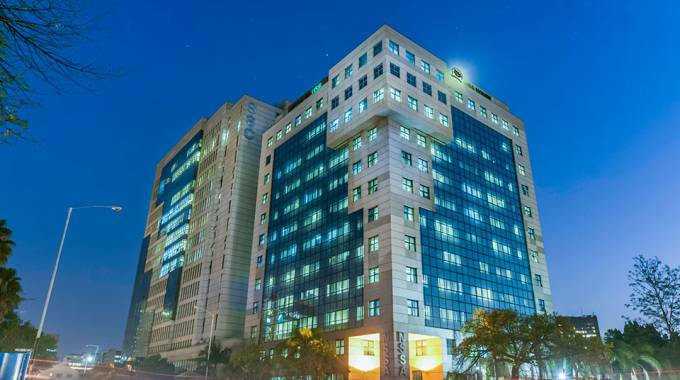Industrial development must be regional
Southern Africa is ripe for industrialisation to rapidly increase growth rates and, to be blunt, industrialisation is about the only way the region will achieve decent standards of living as there is an extreme limit over just how much wealth that a pure commodity or raw material producer can extract from minerals and basic agricultural products.
Mining does create employment, but not the millions of jobs the region needs. Farming can produce a lot of wealth, but not that much per person when almost everything is done by hand labour, and mechanisation, while increasing output does not increase employment and in fact usually diminishes sharply the percentage of the workforce earning a living directly from the land.
The service sector is booming across much of the region, but there are limits over how many shops are needed and how many people they can employ, and even when we look at IT and financial sectors, again we find a good core of decent jobs in a developed economy but not vast numbers of these jobs, with artificial intelligence applications likely to reduce financial sector employment.
So while the region needs to continue using mining, and needs to continue extending the farm outputs, retaining the modest size family farms while it does this to spread wealth, it needs to recognise that the percentage of the population working in industry needs to rise rapidly if a majority of the population are to eventually have first world standards of living.
At present in the region, South Africa comes closest to an industrial economy with a well-developed and large industrial and manufacturing sector.
The desire for autarchy in the apartheid era, and global trade sanctions helped push that self-sufficiency policy, did create some imbalances in manufacturing, with some industries created almost purely for self-sufficiency, rather than because they were a natural start-up.
At the same time the industrial exports are modest, and largely to neighbours within the Southern African Customs Union, since the home market was the prime reason for opening a factory, although present policy is to push exports more.
The dual economy of South Africa, with a First World economy resting on a Third World economy sees much of the industrial sector in the upper part of the economy, with its higher wage levels, which can make some products uncompetitive. The South African textile industry has complained for decades, for example, about cheap imports.
But at least South Africa has a strong primary industrial sector: steel, chemicals, heavy manufacturing industry where it makes cars, rather than assembles them, plus easily the largest consumer industry in the region where its autarchy policies made many global companies set up plants in South Africa.
The rest of SADC has very largely far smaller industrial sectors as a percentage of their economies, and much of that industry, with some exceptions, being in the secondary industries and frequently requiring a high percentage of imported raw materials, although again there are efforts to find the local products.
The smaller countries outside South Africa mean smaller local markets, and while there are policies of increasing exports these are not the big winners, although Zambia perhaps comes closest to developing export markets from its new industries.
Yet between them, the SADC states have a lot of the required raw materials for a full industrial base, everything from oil in Angola and natural gas in Mozambique, to the high levels on mineral wealth across the region plus an agricultural base that takes into its range almost all climate conditions.
SADC has for some time formally seen that almost all the bits are there for a regional industrial giant, and its member states have seen the potential as well, although the pressure tends to be building the national markets rather than a regional market.
Despite discussion and the expression of good intentions SADC is not a single market, with even the partial free trade in two separate boxes of SACU and Comesa in the past.
There was even agreement of working towards a single currency for SADC some years ago, with absolute zero progress. The advent of the African Continental Free Trade Area will open up opportunities but again progress while steady is slow, and SACU is not really working very fast on integration.
A fundamental base for rapid industrialisation seems to require as a necessary pair of conditions the double of something far closer to a single market and a general retreat from national autarchy towards a regional autarchy with each country tending to specialise in what it can do best.
Sometimes this, as one major fertiliser company has been doing with operations in four countries, is to move raw materials around and split its final four factories between four countries.
The other aspect that must be considered is investment. Outside housing markets there is not a lot of loose capital floating around SADC, with even richest South Africa is not really self-sufficient in local capital.
Consumer spending seems to be a major economic driver, with rather low savings levels, and the more advanced financially a country is the more likely that credit consumer spending will rise.
China’s huge surge in industrial production after the death of Mao Zedong was partly driven by its huge local national market, the largest in the world at that point, and partly by the cultural aspect that Chinese were reluctant to buy on credit, and instead saved the money for what they wanted.
That provided a huge pool of savings that could be lent to the unleashed private sector and even the national and provincial governments who had to put in a lot of infrastructure.
China also did, and still does, a lot of contract manufacturing by Chinese companies rather than via local subsidiaries of global companies.
That huge pool of investment savings made this possible. Some of the Chinese contractors have now become the direct manufacturers; Lenovo computers is a major example buying out IBM’s consumer divisions and using its own branding in a global market. But Apple products are still mostly made in China under contracting arrangements.
A SADC industrialisation strategy, or at least progress in industrialisation, will almost certainly require external investment, although the build up across the region in local capital funding, especially the insurance and pension-fund industries and the growing stock exchanges should not be dismissed.
The SADC Industrialisation Week before the SADC Summit in Harare is now trying to put together the practical bits and pieces that are needed to accelerate SADC out of its largely commodity economies into an industrial age.
It correctly makes the need for regional co-operation a major plank, so that an industrialist can find most raw materials within the region, which is basically impossible on a national basis.
It also sees AfCFTA being the lynchpin of a successful major industrialisation, the countries with easily the largest share of African minerals and other raw materials being a core industrial centre of Africa.
All the countries now see the private sector being the engine of industrialisation, and all are welcoming to foreign investment, which is a start. So the investment agencies from each country are all invited to the industrialisation week to make their pitches.
They also need to be talking to each other, to make it easier to establish regional industries that combine raw materials from several countries.
But there is also the need for infrastructure and this is far more Government driven. We have a fairly good regional rail network, but large stretches need upgrade and even re-opening.
We have ports, but these tend to just cope with traffic now on offer and will need expansion, or extra ports added. Beira, for example, is not a natural port and was built because a port was needed where it was placed but other sites need to be examined.
There are plans for new railways, the transkalahari being a prime example that has been on planners’ maps for many decades, along with a connection across the DRC from the coast to Katanga, again a line drawn on colonial maps.
The north-south line sinks to just one single-track railway in places. And there are still isolated major lines from ports that do not connect to the network.
The road network is in better shape these days, with a return to regional highways that were a mainstay of past plans, but they need to be backed by a decent railway grid for moving those minerals and manufactured raw materials long distances, and then for shipping out the final manufactured products.
All these bits need to be put together to make a regional industrial strategy work. There is no simplistic answer, and the meeting at the end of next month needs to be able to go into detail and at least list priority areas.-ebusinessweekly









